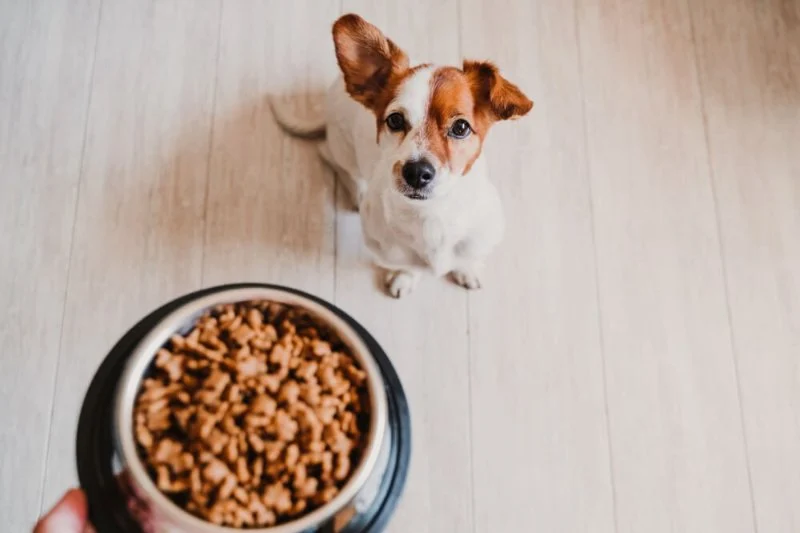
- Understanding the Transition Process for Pets
- Setting the Right Timeline for Transitioning Pets
- Guidelines for Successful Pet Transitions
- Case Studies on Successful Pet Brand Switches
- Additional Tips for Smooth Pet Transitions
Understanding the Transition Process for Pets
Transitioning your pet to a new brand of food or products can be a tricky process. It's essential to approach it thoughtfully to ensure your pet's health and comfort are prioritized. Whether you're switching to a new brand of food, treats, or other pet products, it's important to follow a structured and gradual approach. This process not only helps prevent digestive upset but also ensures your pet adapts well to the new products.

Lovet Pet Health Care - White Tanks
SurpriseMaricopa CountyArizona
16578 W Greenway Rd #215, Surprise, AZ 85388, USA
Setting the Right Timeline for Transitioning Pets
One of the key factors in a successful transition is the timeline. Rushing the process can lead to stress for your pet and possible health issues, such as gastrointestinal upset. It's recommended to transition your pet over a 7 to 10-day period, especially if you're switching food brands. The timeline can vary based on your pet's age, size, and sensitivity to changes.
A typical timeline might look like this:
- Days 1-3: Start by mixing 25% of the new brand with 75% of the old brand.
- Days 4-6: Increase the new brand to 50% while reducing the old brand to 50%.
- Days 7-10: Gradually shift to 75% new brand and 25% old brand.
- Day 10 and onward: Fully transition to the new brand if there are no signs of digestive issues.
Guidelines for Successful Pet Transitions
Transitioning pets to a new brand requires more than just a gradual shift in products. Here are some guidelines to follow to ensure the transition is as smooth as possible:
- Monitor Your Pet's Health: Keep a close eye on your pet during the transition period. Watch for any signs of discomfort, such as vomiting, diarrhea, or loss of appetite. If these symptoms persist, it may indicate that the transition is happening too quickly, or the new brand is not suitable.
- Introduce New Products Gradually: Whether it's food, treats, or other products, always introduce the new items gradually. This gives your pet time to adjust without overwhelming their senses.
- Stay Consistent: Consistency is key when transitioning your pet. Avoid switching products frequently, as this can confuse your pet and cause digestive issues.
Case Studies on Successful Pet Brand Switches
Let’s look at a few examples of pets who successfully transitioned to a new brand of food:
One case involves Max, a Labrador Retriever. Max's owner switched him from a popular brand to a more natural, grain-free food. The owner followed a careful 10-day transition timeline, and Max adapted well, with noticeable improvements in his coat and energy levels. The gradual process, combined with monitoring for any issues, ensured a smooth transition.
In another case, Bella, a Persian cat, was switched from her long-time brand to a premium wet food. Bella had been experiencing digestive issues with her previous food, so her owner was careful to consult a vet before making the change. By transitioning Bella over a two-week period and adding a probiotic supplement, the change was seamless, and Bella’s digestive health improved significantly.

VIP Petcare Vaccination Clinic
MooresvilleMorgan CountyIndiana
490 S Indiana St, Mooresville, IN 46158, USA
Additional Tips for Smooth Pet Transitions
To make the transition even smoother, consider these additional tips:
- Consult Your Veterinarian: If you're unsure about which brand is best for your pet, it’s always a good idea to consult with your veterinarian. They can recommend a brand that fits your pet’s specific dietary needs.
- Choose High-Quality Products: Switching to a new brand is an excellent opportunity to upgrade your pet’s diet. Opt for high-quality food with natural ingredients that suit your pet’s age and health condition.
- Stay Patient: Some pets take longer to adjust than others. If your pet isn't showing immediate signs of improvement, don’t give up! Continue the gradual transition process and provide plenty of love and encouragement.







 susan hodge, dvm, dacvs-sa | small animal surgery4.0 (5 reviews)
susan hodge, dvm, dacvs-sa | small animal surgery4.0 (5 reviews) Arizona Animal Hospital4.0 (629 reviews)
Arizona Animal Hospital4.0 (629 reviews) Union Pointe VetCare5.0 (39 reviews)
Union Pointe VetCare5.0 (39 reviews) Dustin's Fishtanks4.0 (418 reviews)
Dustin's Fishtanks4.0 (418 reviews) Noah's Ark Animal Clinic of Springdale4.0 (133 reviews)
Noah's Ark Animal Clinic of Springdale4.0 (133 reviews) Countryside Animal Hospital: La Grange Veterinarian4.0 (445 reviews)
Countryside Animal Hospital: La Grange Veterinarian4.0 (445 reviews) Heatstroke Prevention: How to Keep Pets Cool in Summer
Heatstroke Prevention: How to Keep Pets Cool in Summer Redirecting Destructive Chewing in Puppies – Effective Solutions for Pet Owners
Redirecting Destructive Chewing in Puppies – Effective Solutions for Pet Owners How AI & Data Are Transforming Preventive Pet Health Care
How AI & Data Are Transforming Preventive Pet Health Care Top 10 Mistakes New Pet Owners Make & How to Avoid Them
Top 10 Mistakes New Pet Owners Make & How to Avoid Them How to Transition a Senior Pet to Easier-to-Eat Food
How to Transition a Senior Pet to Easier-to-Eat Food How to Calm a Nervous Pet During a Thunderstorm or Fireworks – Expert Tips
How to Calm a Nervous Pet During a Thunderstorm or Fireworks – Expert Tips